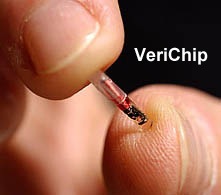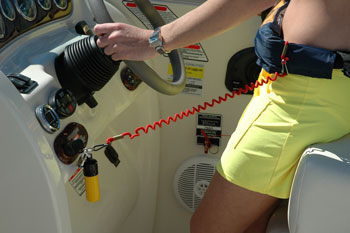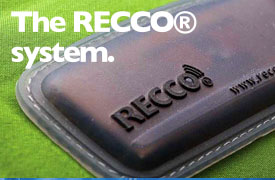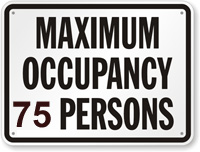Implantable Non-Unique RFID Tag / RFID Chip / RF Reflector Used to Detect Human Presence and/or Human Proximity and/or Human Location invention
Our Implantable Non-Unique RFID Tag / RFID Chip / RF Reflector Used to Detect Human Presence and/or Human Proximity and/or Human Location invention disclosure below was posted on 29 August 2011. It is one of five related RFID invention disclosures we posted today. We will make no changes to the invention disclosure that begins with text below the horizontal line following this paragraph except to correct misspellings, punctuation, and to update html/computer codes and links. Any updates to the invention will be posted below the horizontal line marking the end of the invention disclosure.
Implantable RFID Chip Background Information
In December 2001 VeriChip first announced a miniaturized, implantable, radio frequency identification (RFID) device. VeriChip, now Positive ID, promoted implanting humans with unique RFID (Radio Frequency Identification) tags/ chips. About the size of a large grain of rice, these implantable RFID chips are similar to the RFID chips implanted in dogs and cats for identification at the pound and animal shelters. RFID chips are basically intelligent bar codes.
VeriChip Corporation was a wholly owned subsidiary of Applied Digital Solutions, Inc. (ASDX).
VeriChip obtained FDA approval in 2004 to implant its RFID tags/ RFID chips in humans and targeted the hospital patient identification market. Hospital doctors, nurses, and other and employees could scan patients and gain access to a database containing their medical records, test results, prescriptions, diagnosis, health care plans, and other information. The use of implantable RFID patient identification was said to reduce costs, confusion, and medical errors. VeriChip also targeted Alzheimer’s patients that might wander off and not know who they were.
Verichips were normally implanted / injected in the right arm between the shoulder and elbow. Some have been implanted in the web between thumbs and index fingers.
The project failed miserably due to public objections based on privacy issues, religious issues (some claim it represented the mark of the beast spoken of in the book of Revelations), and concerns over potential health effects. Some feared governments would make “chipping” compulsory. Even in recent times, some have suggested President Obama’s Health Care Plan would call for RFID chip implants.
There are many kinds of RFID tags. Some can be powered by the energy from the reader’s antenna(s). Once activated they broadcast their ID / serial number. Some RFID tags can then be queried for additional information which they may encrypt before broadcasting. Some RFID tags can be written to over and over, allowing systems to communicate with them and to write to them.
Detecting the Presence of Humans
Many technologies are used to detect the presence of humans. Among them are security video cameras, camera based detection systems, passive infrared (PIR) sensors, heat sensors, motion sensors, detecting the weight of a person in a seat, laser beam detectors, capacitance detectors, dead man switches, breathing or heart beat detection, ultrasonic ranging sensors, carbon dioxide sensors (CO2), security guards, guard dogs, blood hounds, and detecting an object the person is wearing or carrying.
In order to reduce false positives (false alarms), multiple technologies are often used to verify human presence. Even using multiple technologies, reliable detection of human presence is sometimes challenging.
For example, a recreational boat creates a challenging environment to determine if the boat operator is at the controls or has fallen overboard. Sensing challenges include, but are not limited to being outdoors, the marine environment, solar glare, heat, water sometimes at temperatures near humans, corrosion, vibration, moisture, boats underway at speed, noise, boat rocking with the waves, shocks when crossing larger waves or wakes, wind, rain, night time dark operation, and the limitations of battery power.
Traditionally, lanyard kill switches (emergency engine cut-off switches) sometimes called tether kill switches have been used for detecting boat operator presence. The boat operator is supposed to affix one end of the lanyard to their belt, life jacket / Personal Floatation Device (PFD), swim suit, or other article of clothing while the other end is fastened to the kill switch. If the boat operator falls overboard, the other end is pulled from the kill switch and the boat engine/motor is killed/stopped. Lanyard based emergency engine cut-off systems have historically worked pretty well when used, but few boaters actually use the lanyard. Similar kill switch systems are used on snowmobiles, All Terrain Vehicles (ATVs), Personal Water Craft (PWCs), and in other applications.Implantable Non-Unique RFID Tag / RFID Chip / RF Reflector Used to Detect Human Presence and/or Human Proximity and/or Human Location Invention
Implant humans with an RFID (Radio Frequency Identification) tag / RFID chip similar to those from VeriChip / PositiveID Corporation except the tag/chip is not unique. When scanned it broadcasts the same ID / serial number as all of the other tags used for this purpose (for a specific version of this invention). For example, all the RFID tags could broadcast a 16 digit number in which each digit is a “1” such as 1111111111111111.
The RFID tags could be built by several different manufacturers. They would just have to all use the same agreed upon serial number on every single RFID tag/ RFID chip.
If people still resist the broadcasting of a number, even though it is the same number as all the other tags, the alphanumeric phrase “HUMAN” could be stored on the RFID tag/ RFID chip. When it is queried for more information, the tag could broadcast the word “HUMAN”.
The chip itself may be electronically imprinted with the manufacturer’s name and other information, but no unique information is encoded in the chip. We suggest lot numbers and/or manufactured dates not be electronically readable from the tag/chip. Lot numbers and/or manufactured dates could be placed on packaging and/or physically printed on the RFID tag/chip, but not included in any information broadcast or externally accessible from the implant site once the RFID tag/ RFID chip has been implanted.
A card could be issued to the implantee providing the implantable RFID chip’s manufacturer’s name, model number, lot number, manufacturing date, implantation date, and additional information if desired (similar to the card provided to patients receiving joint implants, dental implants, pacemakers, and other medical devices), but we suggest no record of the lot number or manufacturing date of a specific RFID implanted in a specific person be maintained by the implantor.
Implantable non-unique RFID tags / RFID chips allow the presence of humans to be detected with RFID systems. Human non-unique RFID detection systems could be used in safety systems (a person is or is not where they belong), advertising systems (video plays when person walks by), in the work environment (seeing if somebody is really at a specific work station or not), in single employee clock in / clock out workplace time card systems, to remote activation (operating HVAC and lighting systems when people are in an area), in security applications, and a host of other applications.
Non-unique RFID systems could be used to count people in an area, to triangulate the location of people in two or three dimensions, and for many other purposes.
Non-unique RFID systems could be used to determine the proximity of humans to a certain location or object.
Non-unique RFID systems could be used to help locate people buried under debris, snow avalanches, building cave ins, earth / trench cave ins, and other disasters.
RECCO is well known for producing RECCO reflectors for finding people buried under snow avalanches. RECCO reflectors function similar to RFID tags but do not contain a serial number. RECCO reflector tags are primarily applied by sewing onto clothing, attaching to boots or helmets, or embedding in clothing. RECCO tags focus on reflecting as much energy as possible. They do not require a chip to modulate the energy to return their serial number.
A “RECCO like” implantable device could be designed similar to a RECCO reflector, in that an implantable device similar to a VeriChip could be manufactured to reflect the maximum amount of energy, it would not have a chip, and it would not broadcast a serial number. Without the need to expend energy to modulate the antennae to broadcast a serial number, “RECCO like” implants could send back stronger signals allowing detection over greater distances. While “RECCO like” implants would not generate the same magnitude of signal as a RECCO reflector, they would generate a stronger signal than the existing VeriChip implants and could be used in all the applications discussed in this invention disclosure. “RECCO like” implants could also be used in search and rescue operations, but would obviously not perform equally to the much larger RECCO reflectors.
The antennae of the “RECCO like” implant above could be manufactured to send back a few bits of data (see Chipless RFID). Those few bits of data could be all 1’s. This would help prevent the “RECCO like” implant from being confused with other reflected signals.
Non-unique RFID systems could be used to count people passing a certain point (sort of a virtual turnstyle). The same non-unique RFID system (or another simliar RFID system) could count people exiting. Alone or together, they could develop an estimate of occupancy.
One or more non-unique RFID systems working together (at one or more doors or entrances) could be used to estimate occupancy of certain area (like Fire Code counts for bars or popular restaurants). They could remotely report counts, and issue alarms based on the number of people present.
The use of non-unique implantable RFID tags / RFID chips and/or “RECCO like” implants will help calm privacy and religious concerns of potential users.
References
- RECCO reflectors are used to find people under snow avalanches.
- RF and THz Identification Using a New Generation of Chipless RFID Tags. Etienne Perret, Maher Hamdiz, Arnaud Vena, Frederic Garet, Maxime Bernier, Lionel Duvillaret, Smail Tedjint. Radio Engineering. Vol.20. No.2. June 2011.
- All five RFID invention disclosures we made today.
It is clear that the present invention is well adapted to carry out the objects and attain the ends and advantages mentioned as well as those inherent therein. While some presently preferred embodiments of the invention have been described for purposes of this disclosure, numerous changes may be made which will readily suggest themselves to those skilled in the art and which are encompassed within the spirit of the invention disclosed and as defined in the appended claims.
Our Claims
We (Polson Enterprises, owner of the Propeller Guard Information Center) claim the the inventions described in this invention disclosure not previously legally claimed or patented by others and now make a public disclosure of them. At this time we retain all rights to these inventions. Any changes in that position will be placed in the Updates section below.
More specifically we claim:
1. Non-unique RFID tags/ RFID chips for human implantation (multiple tags / chips with the same ID / serial number).
2. Non-unique RFID tags/ RFID chips for human implantation used in combination with human presence detection systems.
3. Non-unique RFID chips for human implantation used in combination with human presence detection systems to protect humans from safety or health hazards that could result in injury or death.
4. Implantable RFID human presence detection systems above (Claims 2 through 3) in which RFID detection is also used in combination with other sensors to limit false positives.
5. Implantable RFID human presence detection systems above (Claims 2 through 4) in which RFID detection is used to triangulate the 2D or 3D position of the person or persons in the area.
6. Implantable RFID human presence detection systems above (Claims 2 through 5) that detect the proximity of the human or humans to a location or object.
7. Implantable RFID human presence detection systems above (Claim 6) that detect the proximity of the human or humans to a location or object and issues an alarm or takes other actions when necessary for the safety of the human or humans involved.
8. Implantable RFID human presence detection systems above (Claims 2 though 7) on agricultural equipment.
9. Implantable RFID human presence detection systems above (Claims 2 through 7) on mobile vehicles (boats, ATVs, PWCs, RVs, motorcycles, automobiles, trucks, buses, trains, subways, trams, airplanes, ships, submarines, tractors, mobile construction equipment, trenchers, and other mobile equipment).
10. Implantable RFID human presence detection systems above (Claims 2 through 7) on mobile vehicles (boats, ATVs, PWCs, RVs, motorcycles, automobiles, trucks, buses, trains, subways, trams, airplanes, ships, submarines, tractors, mobile construction equipment, trenchers, and other mobile equipment) that detect the presence or absence of the operator.
11. Implantable non-unique RFID chips used in combination with a human presence detection system to kill the engine(s) of a boat, personal watercraft (PWC), all terrain vehicle, snowmobile, or similar application if the operator is absent. Together they act as a replacement for conventional emergency engine cut-off switches (kill switches).
12. Implantable RFID human presence detection systems (Claims 2 through 11) remotely control a device or system, such as to turn on lights, music, or HVAC (heating, ventilation, and air conditioning) systems when humans enter a room and to turn them off after they leave (or a given time after they leave).
13. Implantable RFID human presence detection systems above (Claims 2 through 12) counts people entering or passing a certain point (sort of a virtual turnstyle).
14. The same RFID system described in Claim 13 (or another similar RFID system) counts people exiting.
15. A system consisting of one or more non-unique RFID systems working together (on one or more doors or entrances) (Claims 13 and 14) estimates occupancy of certain area, room, or building (like Fire Code counts for bars or popular restaurants).
16. A system consisting of one or more non-unique RFID systems working together (Claim 15) estimates occupancy of certain area, room, or building (like Fire Code counts for bars or popular restaurants) and reports the running count to one or more remote locations via telephone, wireless or hardwired connections, including via the Internet.
17. A system of one or more non-unique RFID systems working together (Claim 16) to estimate occupancy of certain area, room, or building (like Fire Code counts for bars or popular restaurants) issues an alarm (silent, visual, audio, email, or other form) when occupancy exceeds a certain limit (such as the maximum Fire Code Occupancy for the facility or some percentage of the maximum Fire Code Occupancy for the facility). Alarms could be issued locally and/or remotely via telephone, wireless or hardwired connections, including via the Internet to one or more locations.
18. Implantable RFID human presence detection systems above (Claims 2 through 17) in conjunction with systems of appropriate detection range for the task at hand.
19. Implantable RFID human presence detection systems above (Claims 2 through 17) in conjunction with systems of variable detection ranges or multiple detection ranges.
20. Non-unique RFID implantable chips that when activated, broadcast the same number such as the 16 digit ID number of 1111111111111111.
21. Non-unique “RECCO like” implantable RF Reflectors that broadcast the same number, such as 1111 or broadcast the same bits such as 1111.
22. Non-unique RFID implantable chips that when asked to “tell me more”, broadcast the same alphanumeric response, such as the word “HUMAN”.
23. Rewritable non-unique RFID implantable chips.
24. Non-unique RF reflectors for human implantation in which the implantable tag resembles a RECCO reflector in that it is constructed to reflect the maximum amount of energy, does not contain a chip, does not broadcast a serial number, and is approximately the size of a VeriChip.
25. Human presence detection systems above (Claims 2 through 20) in which the implanted device is the implantable non-unique RF reflector described in Claim 24.
26. Use of any of the implantable RFID or non-unique RF reflector human presence detection systems above (Claims 2 through 25) indoors in the workplace environment.
27. Use of any of the implantable RFID or non-unique RF reflector human presence detection systems above (Claims 2 through 25) outdoors in the workplace environment.
28. Use of any of the implantable RFID or non-unique RF reflector human presence detection systems above (Claims 2 through 27).
29. Non-unique RFID implantable chips or non-unique RF Reflectors that respond similar to the non-unique RFID or RF reflector fobs in our companion invention disclosure of this same date.
30. Substitute “traditional RFID implants bearing their own unique ID / serial number” in Claims 1 through 29 for the phrase “non-unique RFID tag(s)” or “non-unique RFID chip(s)”. We recognize many of those applications are now legally claimed by others, but we hereby claim the remaining ones.
END OF INVENTION DISCLOSURE
Updates
Effective 29 August 2012 – We (Polson Enterprises and the Propeller Guard Information Center) now place all parts of the invention described above not previously patented by others in the public domain for use by all who wish to manufacture or use them. The world is certainly welcome to patent improvements to this invention but the basic concepts not previously patented by others are now open to all.
Comments
We encourage public comments about this invention disclosure, please leave them on the Summary Page of the Five RFID Invention Disclosures we made today.



